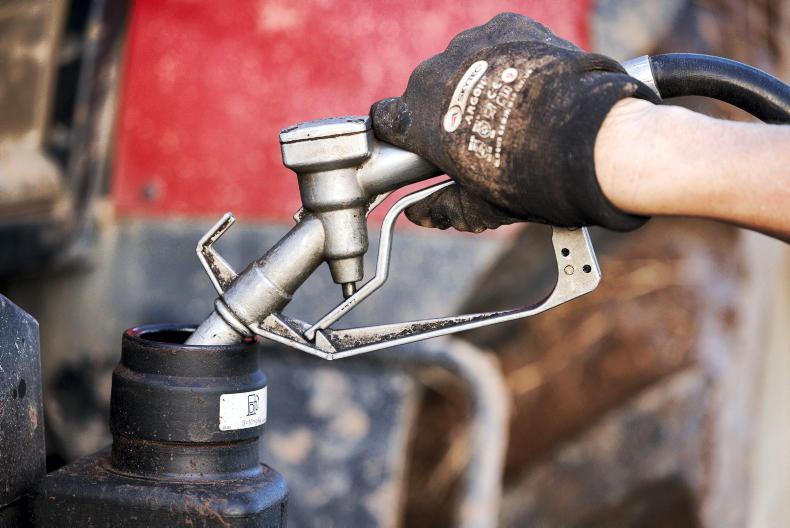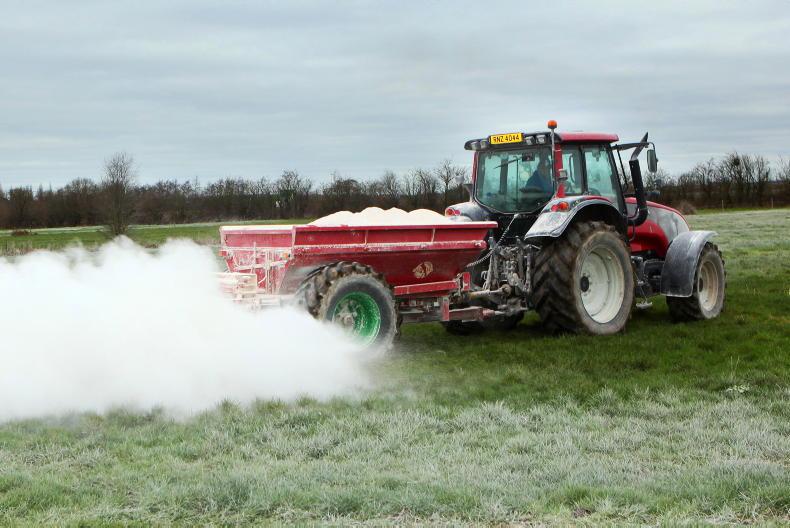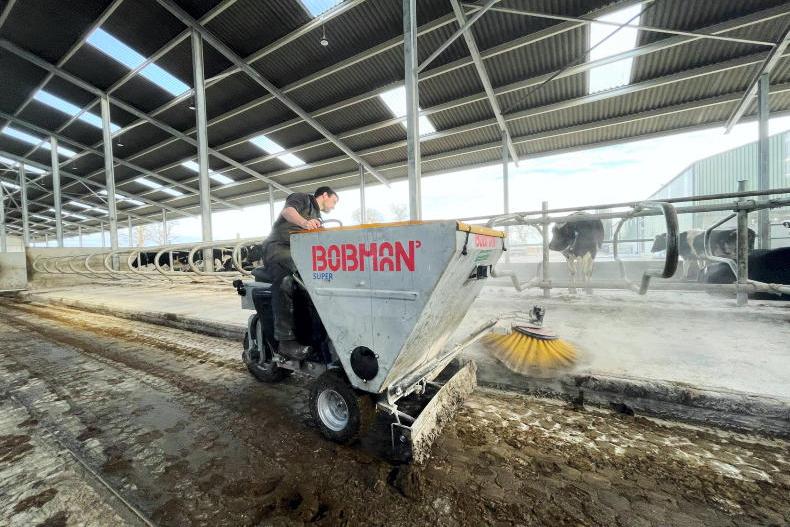Teagasc has calculated that farmers can save €1,000 at current fertiliser prices by switching 5t of CAN for protected urea of the same nitrogen content, which is 3t.
The tonnage difference arises from protected urea having a 47% nitrogen content, while CAN has a lower content of only 26%.
Moving away from CAN is one of the steps farmers can use to reduce greenhouse emissions and ammonia emissions, Teagasc Signpost Programme’s Dr Seamus Kearney said on a webinar hosted by the programme on Friday.
Steps should be taken to reduce the amount of chemical nitrogen needed on farms in the first place, Kearney commented.
These steps include liming to improve the availability of nitrogen in the soil, using low emissions slurry spreading (LESS) techniques to minimise slurry nitrogen losses at application and incorporating clover to further decrease nitrogen requirements.
Kearney stated that reducing chemical nitrogen application by 25% can reduce emissions by 4% to 5% on heavily stocked farms, while a complete switch from CAN could deliver emissions savings of 7% to 8%.
“The really big message here is we need to replace urea with protected urea to reduce ammonia and we need to reduce our CAN with protected urea to reduce our greenhouse gas emissions,” Kearney told the webinar.
“If you look at CAN and protected urea, every 5t of CAN is the same 3t of protected urea, so the same amount of nitrogen in each of the scenarios. But by moving from CAN to protected urea at current prices, we can save farmers €1,000
“And by moving from 5t of CAN to 3t of protected urea, we can save the equivalent emissions of almost a dairy cow – 0.9 of a dairy cow – or one and a half suckler cows,” he said.
Importance of lime
Kearney explained that liming is an important practice for farmers to use in reducing their emissions, as it both increases the availability of nutrients locked in the soil and allows for the establishment of clover.
Lime sales reached a 40-year high last year and the researcher stated that sales are expected to grow further next year, with the Department of Agriculture’s announcement of an €8m lime subsidy scheme for farmers.
“By getting the pH right, first of all we are releasing more naturally occurring phosphorous and, more importantly, nitrogen from the ground. Hence, we can cut back on our chemical nitrogen applications.”
One Teagasc Johnstown research trial cited by Dr Kearney found that spreading 5t/ha of lime on a soil with a pH of 5.5 increased phosphorous availability by an equivalent of two indexes and also released up to 80kg/ha per year of additional nitrogen.
Read more
Importance of correcting soil pH in October
Budget 2023: everything farmers need to know
Plenty of reseeding in the pipeline in Clarina
Teagasc has calculated that farmers can save €1,000 at current fertiliser prices by switching 5t of CAN for protected urea of the same nitrogen content, which is 3t.
The tonnage difference arises from protected urea having a 47% nitrogen content, while CAN has a lower content of only 26%.
Moving away from CAN is one of the steps farmers can use to reduce greenhouse emissions and ammonia emissions, Teagasc Signpost Programme’s Dr Seamus Kearney said on a webinar hosted by the programme on Friday.
Steps should be taken to reduce the amount of chemical nitrogen needed on farms in the first place, Kearney commented.
These steps include liming to improve the availability of nitrogen in the soil, using low emissions slurry spreading (LESS) techniques to minimise slurry nitrogen losses at application and incorporating clover to further decrease nitrogen requirements.
Kearney stated that reducing chemical nitrogen application by 25% can reduce emissions by 4% to 5% on heavily stocked farms, while a complete switch from CAN could deliver emissions savings of 7% to 8%.
“The really big message here is we need to replace urea with protected urea to reduce ammonia and we need to reduce our CAN with protected urea to reduce our greenhouse gas emissions,” Kearney told the webinar.
“If you look at CAN and protected urea, every 5t of CAN is the same 3t of protected urea, so the same amount of nitrogen in each of the scenarios. But by moving from CAN to protected urea at current prices, we can save farmers €1,000
“And by moving from 5t of CAN to 3t of protected urea, we can save the equivalent emissions of almost a dairy cow – 0.9 of a dairy cow – or one and a half suckler cows,” he said.
Importance of lime
Kearney explained that liming is an important practice for farmers to use in reducing their emissions, as it both increases the availability of nutrients locked in the soil and allows for the establishment of clover.
Lime sales reached a 40-year high last year and the researcher stated that sales are expected to grow further next year, with the Department of Agriculture’s announcement of an €8m lime subsidy scheme for farmers.
“By getting the pH right, first of all we are releasing more naturally occurring phosphorous and, more importantly, nitrogen from the ground. Hence, we can cut back on our chemical nitrogen applications.”
One Teagasc Johnstown research trial cited by Dr Kearney found that spreading 5t/ha of lime on a soil with a pH of 5.5 increased phosphorous availability by an equivalent of two indexes and also released up to 80kg/ha per year of additional nitrogen.
Read more
Importance of correcting soil pH in October
Budget 2023: everything farmers need to know
Plenty of reseeding in the pipeline in Clarina










SHARING OPTIONS